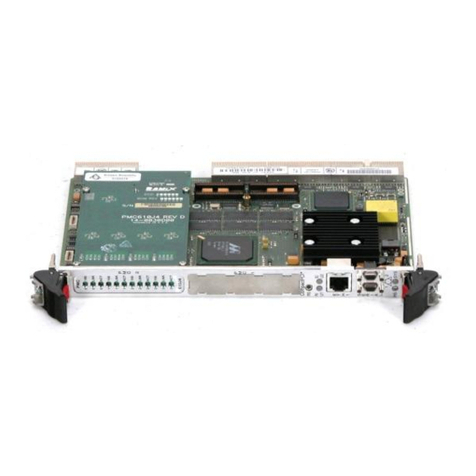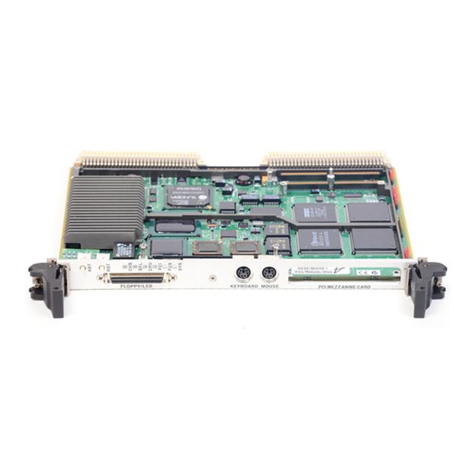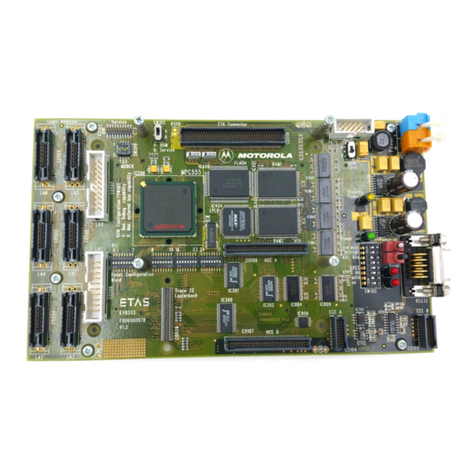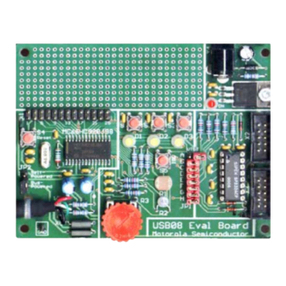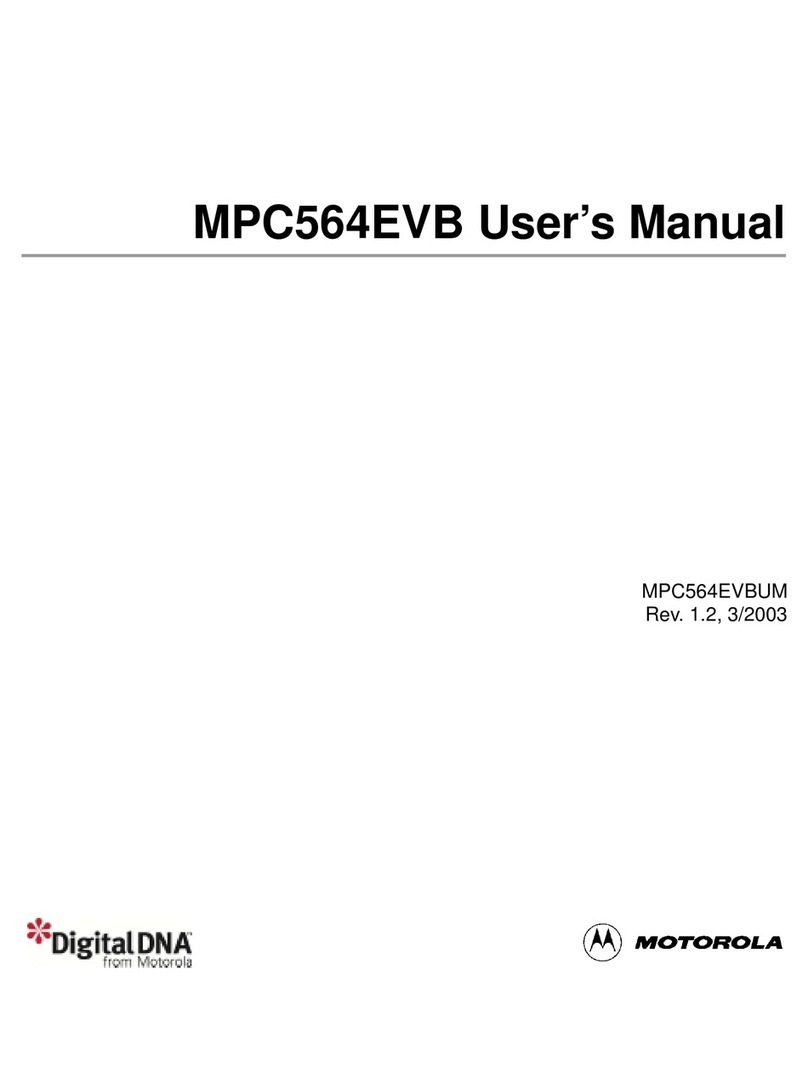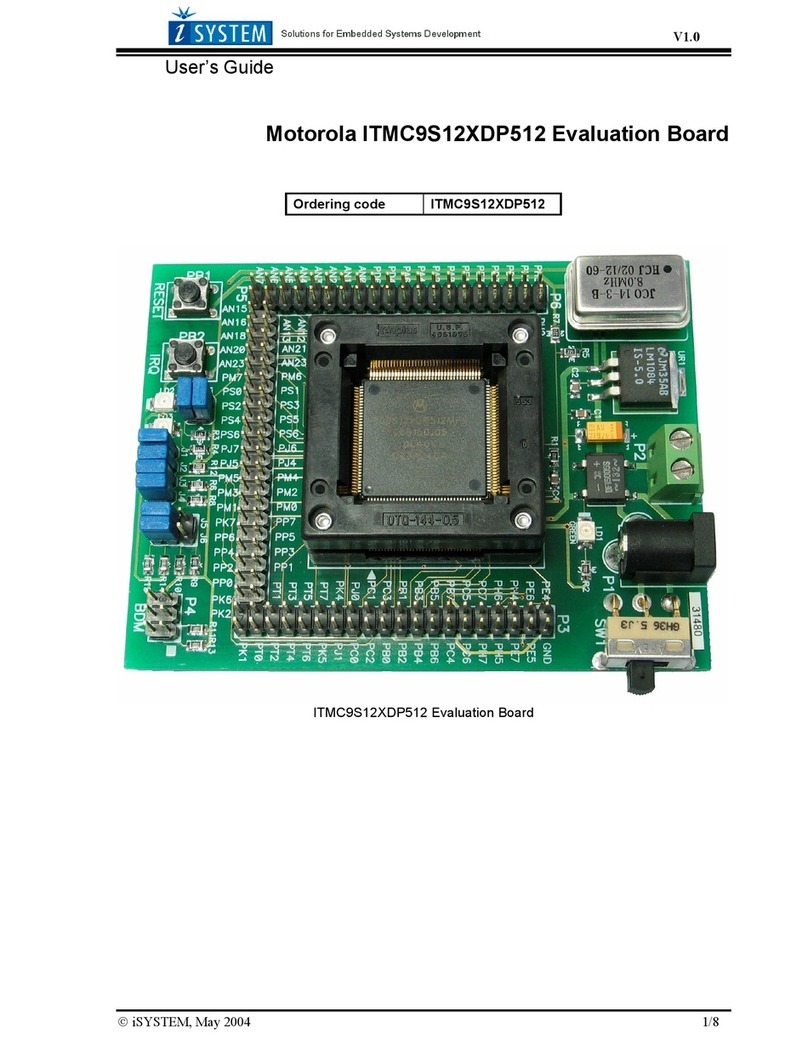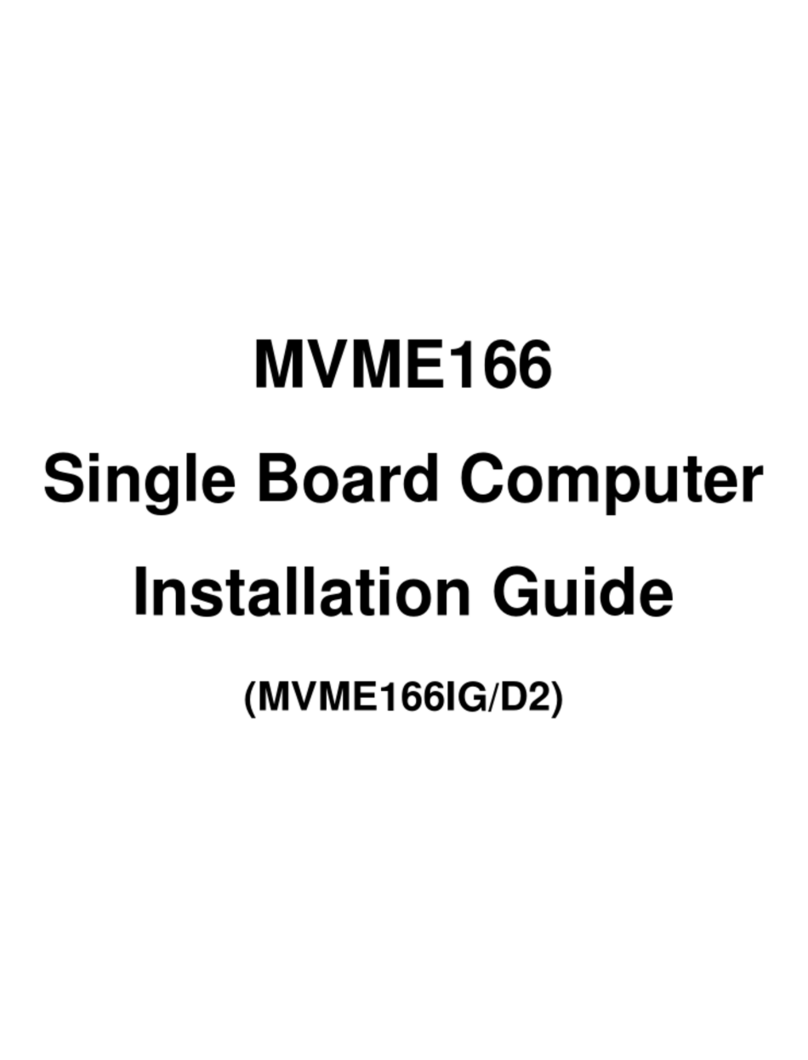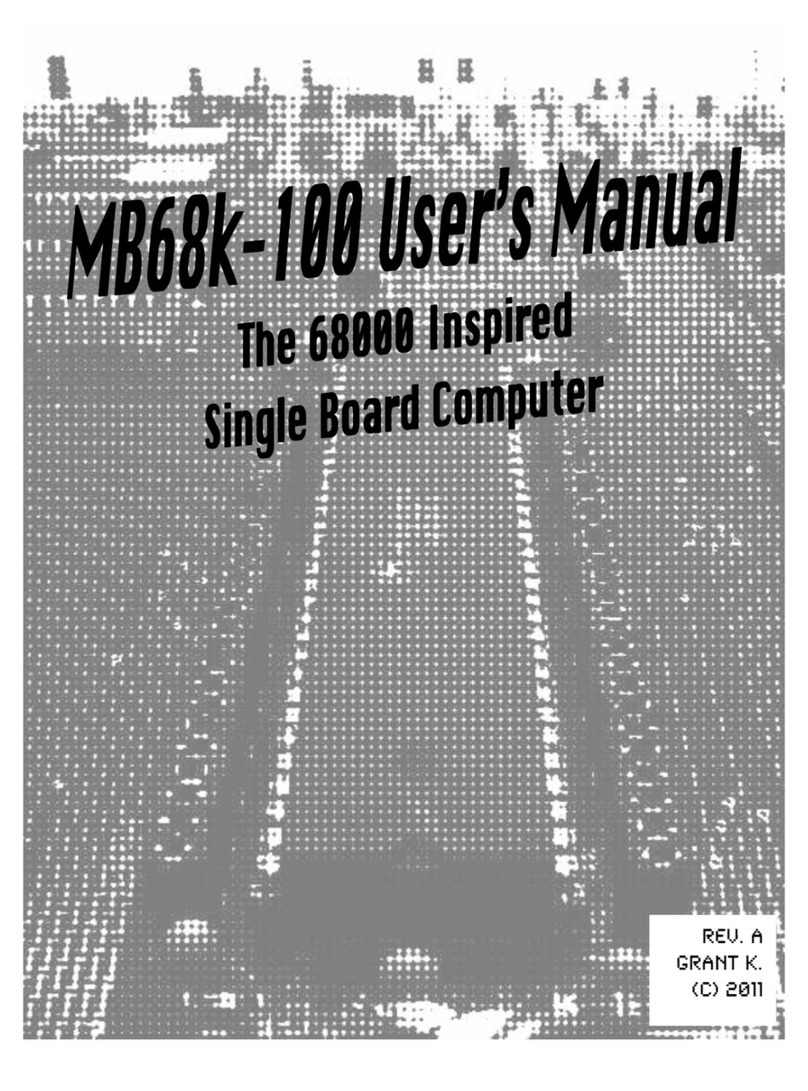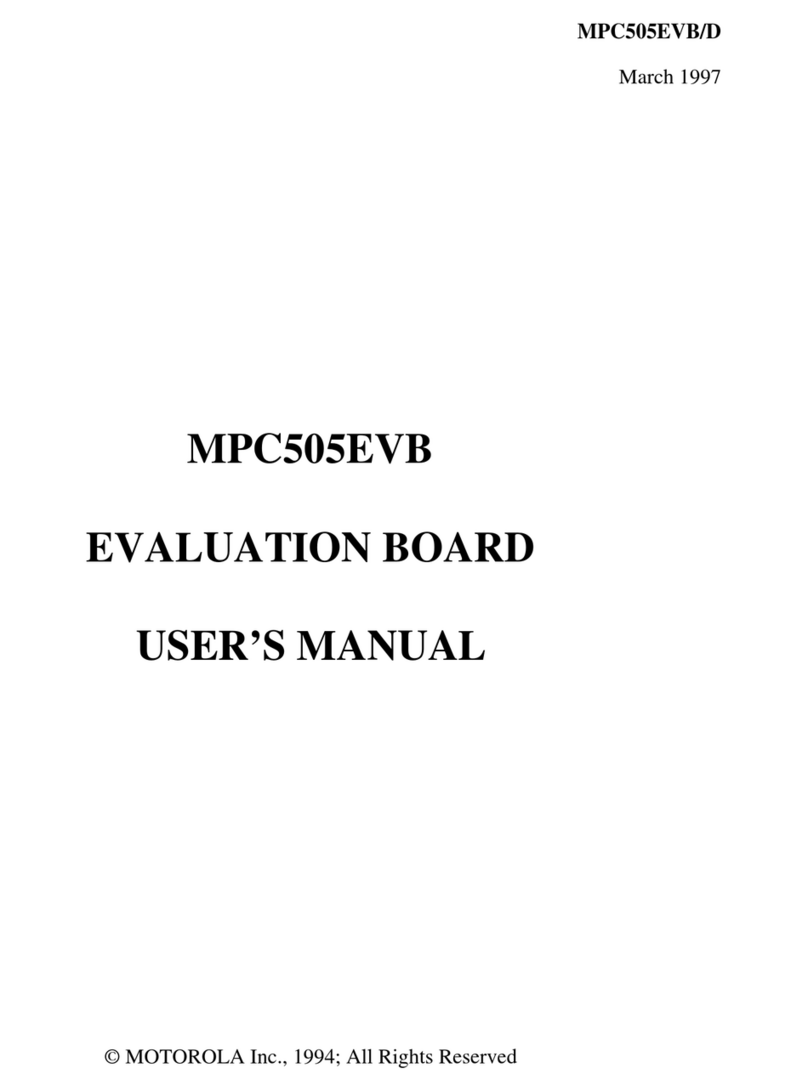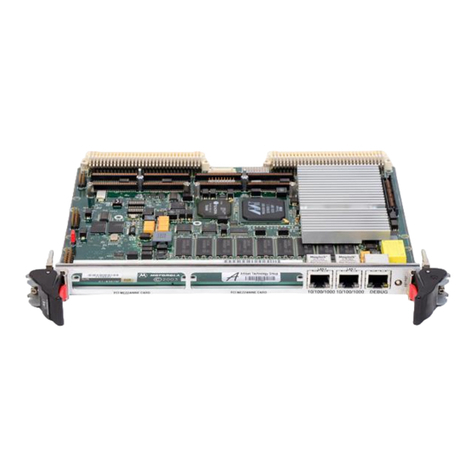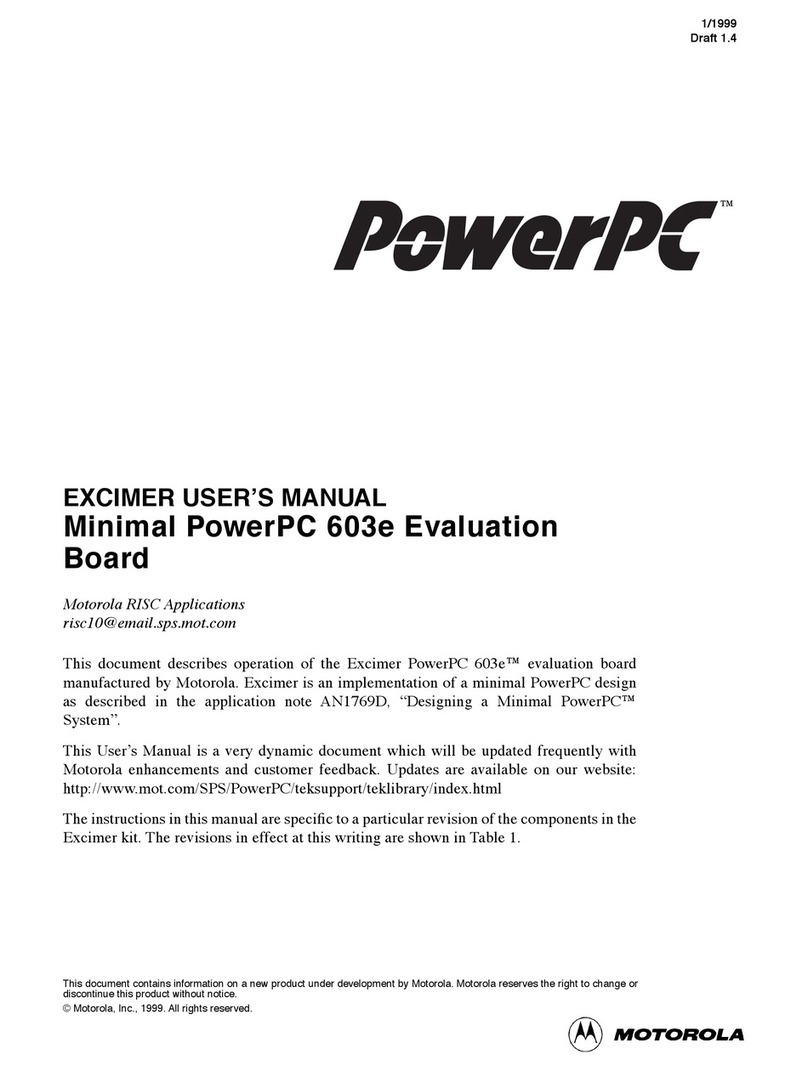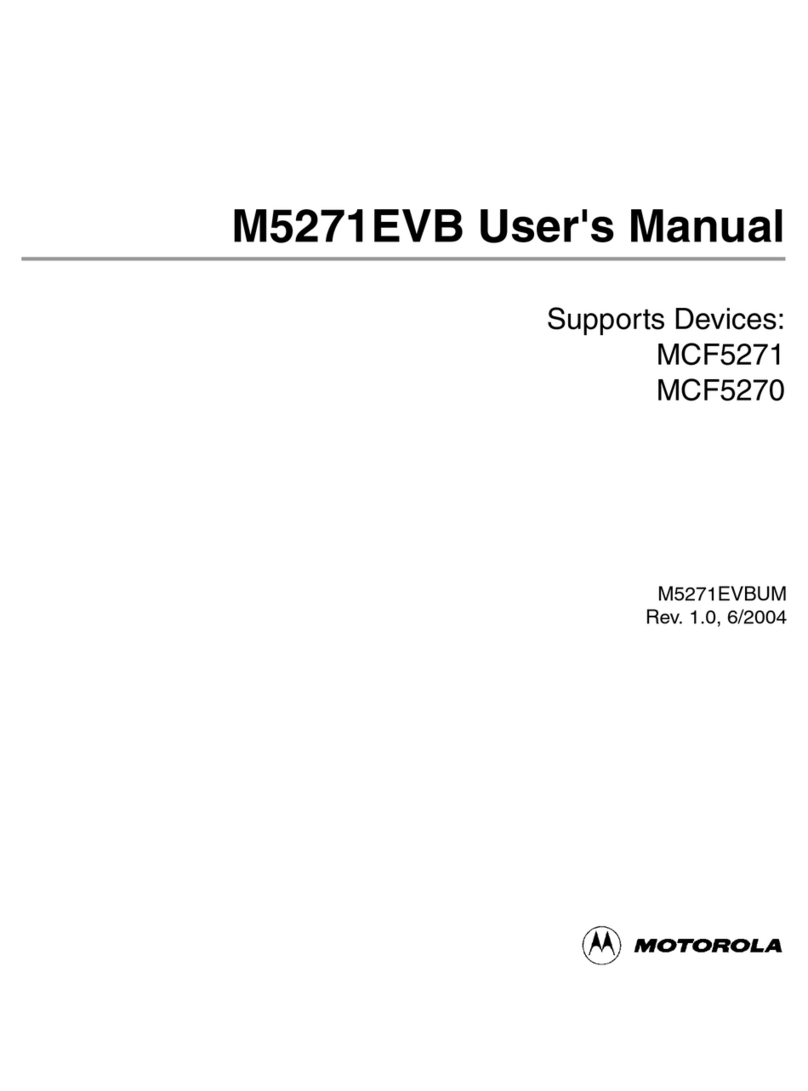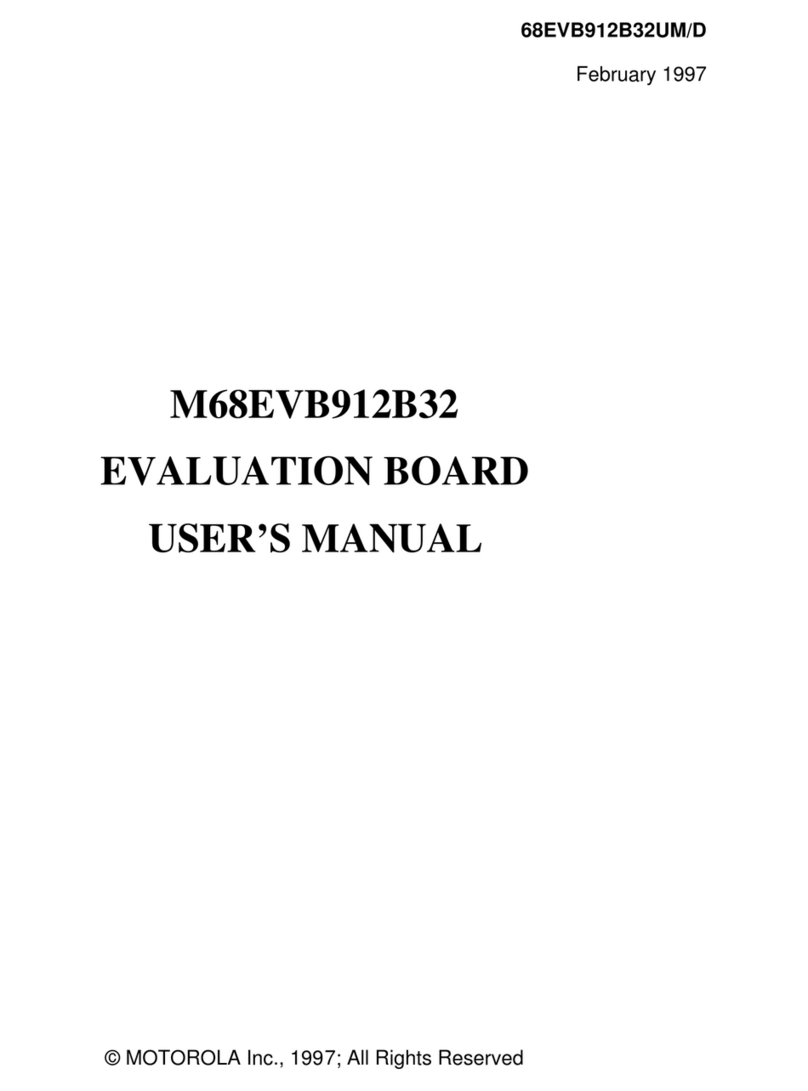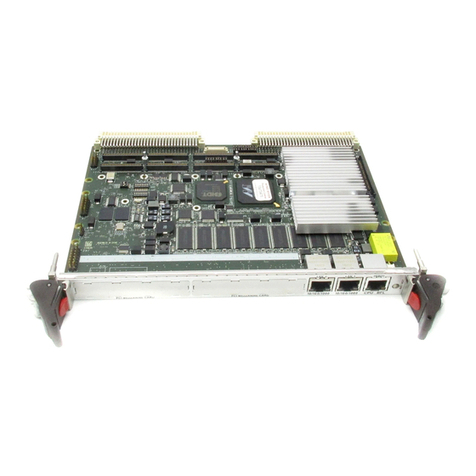
M68EM05P18UM/D
MOTOROLA Table of Contents 7
Table of Contents
General
Description Contents . . . . . . . . . . . . . . . . . . . . . . . . . . . . . . . . . . . . . . . . . . . . . . . .9
Introduction . . . . . . . . . . . . . . . . . . . . . . . . . . . . . . . . . . . . . . . . . . . . .10
Emulation Components. . . . . . . . . . . . . . . . . . . . . . . . . . . . . . . . . . . .10
Emulation Module Layout . . . . . . . . . . . . . . . . . . . . . . . . . . . . . . . . . .12
Target Cable Assemblies . . . . . . . . . . . . . . . . . . . . . . . . . . . . . . . . . .13
Connector Information. . . . . . . . . . . . . . . . . . . . . . . . . . . . . . . . . . . . .15
Target Cable Connector Pin Assignments . . . . . . . . . . . . . . . . . . .15
Logic Analyzer Connector Pin Assignments. . . . . . . . . . . . . . . . . .17
MMDS/MMEVS
Configuration
and Operation
Contents . . . . . . . . . . . . . . . . . . . . . . . . . . . . . . . . . . . . . . . . . . . . . . .19
Introduction . . . . . . . . . . . . . . . . . . . . . . . . . . . . . . . . . . . . . . . . . . . . .20
Setting M68EM05P18 Jumper Headers and Switches . . . . . . . . . . . .21
Clock Source Select Header, W1 . . . . . . . . . . . . . . . . . . . . . . . . . .22
Reset Select Header, W2 . . . . . . . . . . . . . . . . . . . . . . . . . . . . . . . .23
Port A Interrupt Mask Option Control Switch, SW1. . . . . . . . . . . . .24
Remaining System Installation . . . . . . . . . . . . . . . . . . . . . . . . . . . . . .25
Personality File Usage. . . . . . . . . . . . . . . . . . . . . . . . . . . . . . . . . . . . .26
MC68HC(8)05P18 Emulation . . . . . . . . . . . . . . . . . . . . . . . . . . . . . . .26
Mask Option Control . . . . . . . . . . . . . . . . . . . . . . . . . . . . . . . . . . . .27
Port A Pullups/ Interrupts . . . . . . . . . . . . . . . . . . . . . . . . . . . . . . . .28
Port C Bit 7 Sharing with the A/D Subsystem. . . . . . . . . . . . . . . . .29
Programming the 128-Byte EEPROM Array. . . . . . . . . . . . . . . . . .29
HC05EVS
Configuration
and Operation
Contents . . . . . . . . . . . . . . . . . . . . . . . . . . . . . . . . . . . . . . . . . . . . . . .31
Introduction . . . . . . . . . . . . . . . . . . . . . . . . . . . . . . . . . . . . . . . . . . . . .32
Setting M68EM05P18 Jumper Headers and Switches . . . . . . . . . . . .33
Clock Source Select Header, W1 . . . . . . . . . . . . . . . . . . . . . . . . . .34
Reset Select Header, W2 . . . . . . . . . . . . . . . . . . . . . . . . . . . . . . . .35
Interrupt Mask Control Switch, SW1. . . . . . . . . . . . . . . . . . . . . . . .36
Remaining System Installation . . . . . . . . . . . . . . . . . . . . . . . . . . . . . .37
